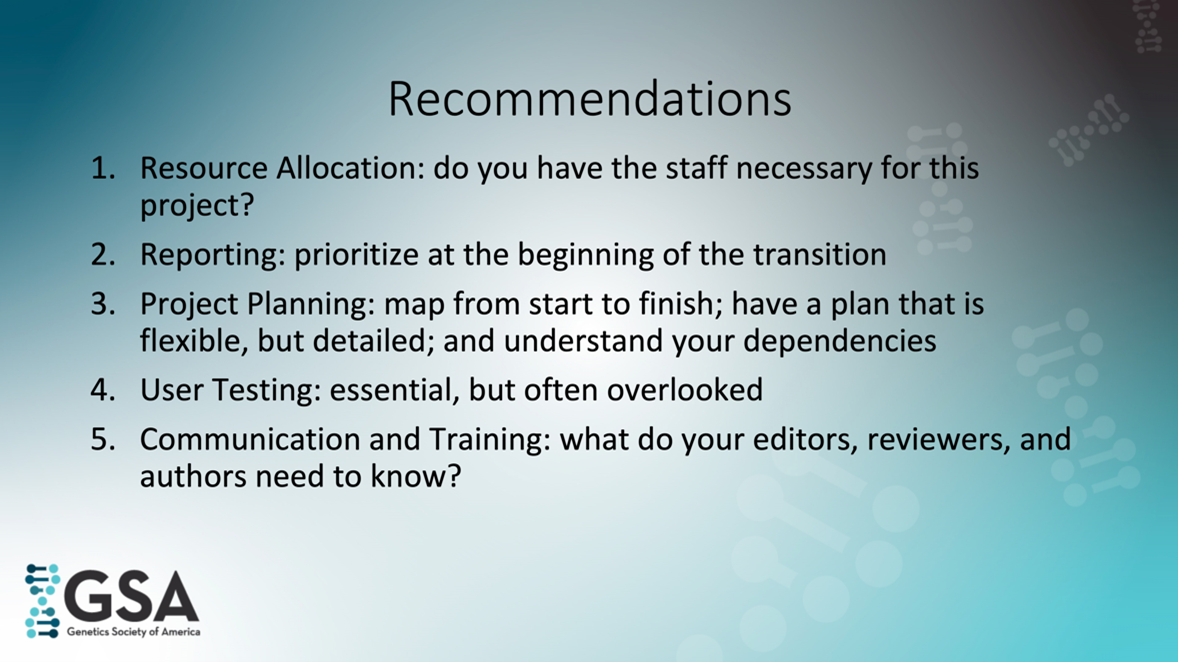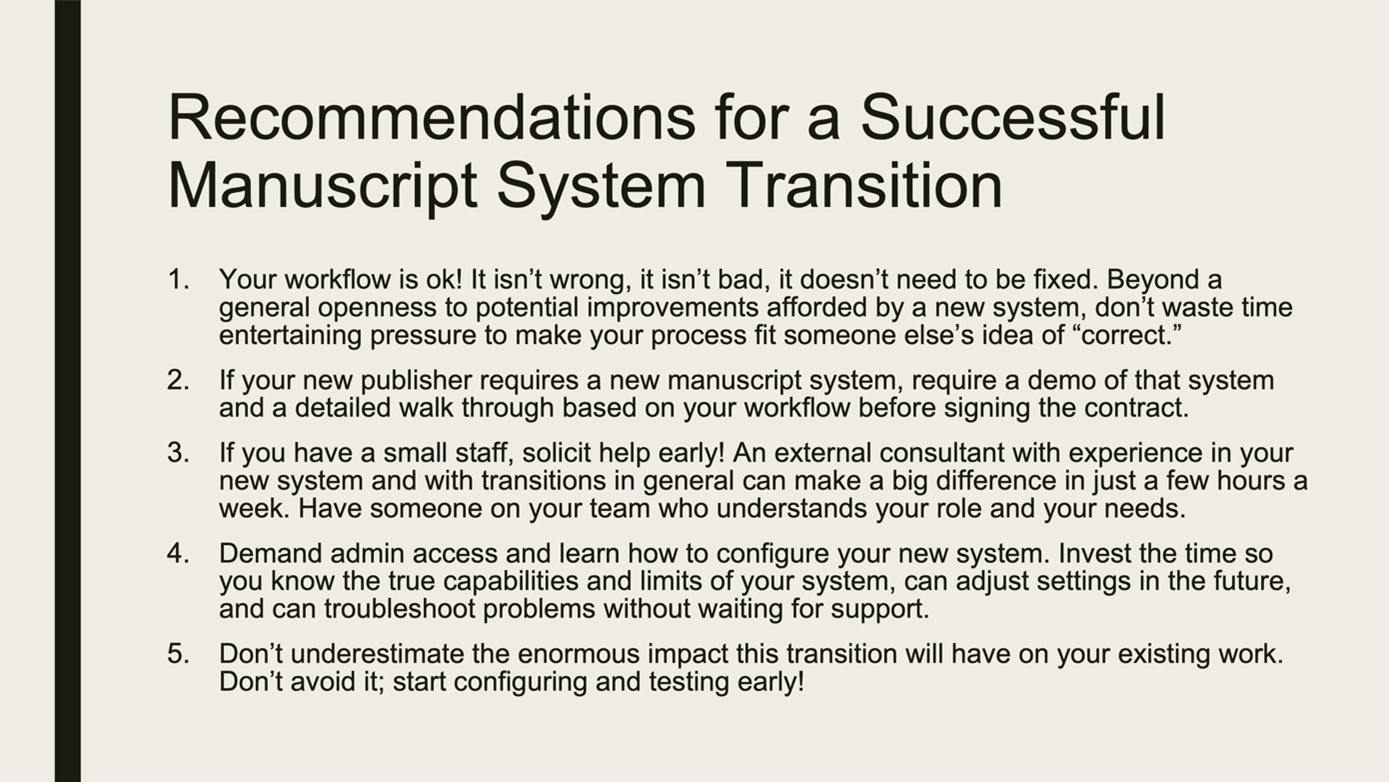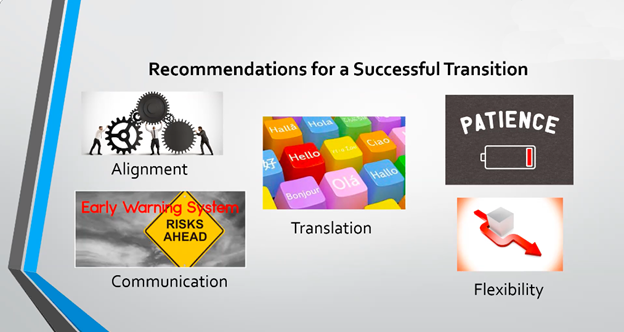MODERATOR:
Shari Leventhal
American Society of Nephrology
Washington, DC
SPEAKERS:
Ruth Isaacson
Managing Editor
Genetics Society of America
Bethesda, Maryland
Lindsey Topp
Former Managing Editor of the American College of Gastroenterology
Manager, MCAT Publications, Technical Writing, and Editorial Projects
Association of American Medical Colleges
Washington, DC
Robin M Zavod
Founding Editor-in-Chief
Currents in Pharmacy Teaching and Learning
Downer’s Grove, Illinois
REPORTER:
Rachel Taylor
Proceedings of the National Academy of Sciences
Phoenix, Arizona
This session was moderated by Shari Leventhal from the American Society of Nephrology and included presentations from Ruth Isaacson, Managing Editor of Genetics Society of America; Lindsey Topp, former Managing Editor of the American College of Gastroenterology and current manager of MCAT Publications, Technical Writing, and Editorial Projects at the Association of American Medical Colleges; and Robin M. Zavod, founding Editor-in-Chief of Currents in Pharmacy Teaching and Learning. The hour-long session included a Q&A segment with participants.
Each presenter provided a unique perspective on transitioning to a new submission system: Isaacson chose to migrate to a new submission system in search for greater customization and improved reports; Topp migrated to a new submission system as part of selecting a new publisher; and Zavod was migrated to a new system by the publishing owners of the journal.
Ruth Isaacson
Isaacson was drawn to eJournalPress1 when she learned about development sharing between clients. Development sharing allows any custom-built features to be used by other clients on the platform. She provided 5 areas of focus to ensure a smooth transition to a new journal system, as outlined in the following sections.
Resource Allocation
Along with ensuring sufficient staff for the project, Isaacson recommended not stretching the transition timeline too far, as it was often frustrating for developers and difficult for the editorial staff to step back in.
Reporting
When working with the developers, it is important to prioritize reporting at the beginning of the transition to determine what reports best suit the journal’s needs, and which reports may need to be built. Isaacson noted the journal’s previous submission site allowed them to sit in “idle mode” for a small annual fee, which provided them the flexibility of pulling reports from any previous manuscripts that were processed in the original submission system.
Project Planning
Isaacson noted the importance of mapping out the entire project prior to commencing, from site migration to phase out. Isaacson remarked that it is important to communicate with the publishers about their ability to handle exports coming from multiple systems. She keeps general documentation of all of the cases where modifications were made in the system, but encourages any who are on the same path to add categories and descriptions of every ticket so that, in the future, it is easy to understand when and why certain changes were made.
User Testing
Isaacson observed that after the initial test site is ready, a wide variety of testing is needed to solicit feedback from editors, reviewers, authors, and internal staff to identify any areas of confusion.
Communications and Training
As the transition draws closer, it is important to create a communication and training plan for the authors, editors, and reviewers to manage expectations with the new system. Providing virtual training, system documentation, and video training proved especially helpful for editors. The learning curve for Isaacson’s large group of editors took close to a year, but learning curves may vary depending on the frequency an editor handles a manuscript.
Lindsey Topp
Topp transitioned to Editorial Manager2 as part of a publisher transition. She discussed 5 pain points her society experienced during the transition and how to avoid them.
Champion Your Workflow
Topp first recommended being clear with the new developers whether you would be open to modifying the workflow. Even though each system has established workflows, there is often a way to accommodate your journal’s existing workflow.
Demo Any New Submission Sites
To avoid any unwelcome surprises later on, be sure to see a demo of any new system to ensure that it will accommodate your existing workflow before signing a contract with a new publisher.
Solicit Help Early
Topp noted that despite the stresses of changing systems, her journal ended up with a more efficient system that solved problems they had been working around for years. Collaborating with external consultants to manage the transition can alleviate stress; they can guide you through the process and make recommendations along the way.
Utilize Admin Permissions
Although it may seem overwhelming to learn a new system, Topp recommends diving headfirst into the administrative side of the system to troubleshoot issues yourself instead of waiting for system support each time.
Start Testing Early
Topp concludes that the best way to tackle a tremendous transition is to start reading, testing manuscripts, and thinking about the transition early.
Robin M Zavod
Zavod discussed her transition to EVISE and to Editorial Manager within Elsevier. She provided 5 focus areas for a successful transition to a new submission system.
Alignment and Translation
During any training sessions or presentations for the new system, it is important to ask questions about how the new system’s workflow will align with the previous system’s workflow. What new steps will be needed to accomplish the same tasks? Zavod saved a spreadsheet of all in-progress manuscripts before the transition. This became a critical reference later, as many manuscripts were hidden upon arrival in the new submission system. Careful documentation and preparation will ease the worry of losing a manuscript during the transition.
Patience
Zavod recommends giving yourself and everyone involved in the process a lot of patience, as it is a major transition for everyone involved.
Communication
Communication is key, especially with individuals who do not enjoy change. These individuals will require delicate handling, as well as space to test the system before returning with questions. After the transition is complete it is helpful to establish a strong rapport with support staff.
Flexibility
Finally, Zavod encourages editorial staff to be flexible about how processes can be completed in the new system. This flexibility includes simplifying processes down to what you are trying to accomplish in the system and allowing the workflow to modulate based on the system’s requirements.
References and Links



